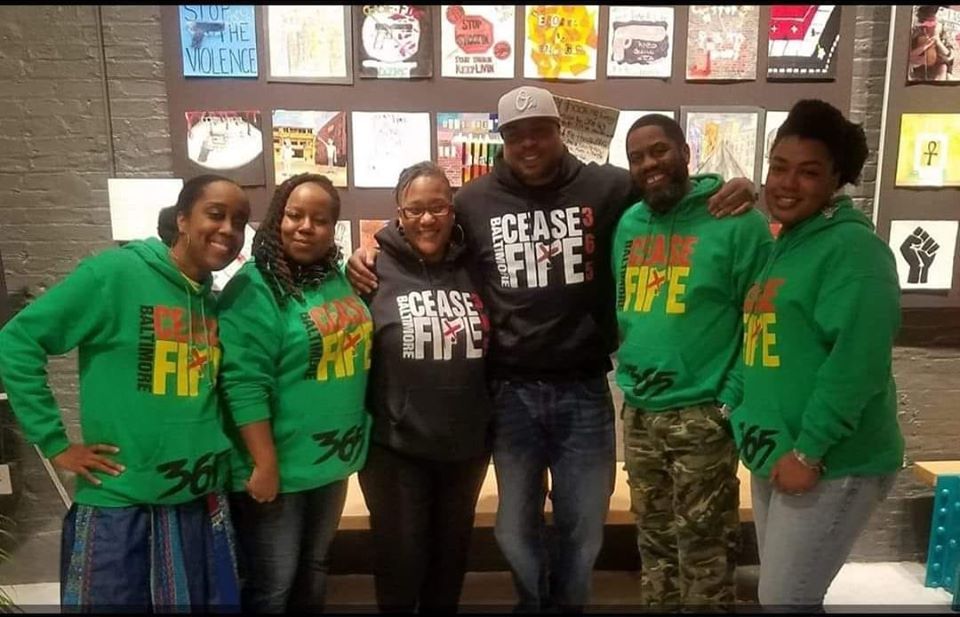[ad_1]
By Sean Yoes
AFRO Baltimore Editor
[email protected]
The AFRO speaks to Erricka Bridgeford, the leader of Baltimore Ceasefire as we celebrate the movement’s third anniversary.
Three years ago, in the midst of the most murderous era in Baltimore’s history, a half-dozen residents came together to shift the energy in America’s most violent city. And the Baltimore Ceasefire Movement was born.

“I have just recently accepted at this three year mark that everything that is happening with this movement it’s something that I don’t fully comprehend,” Erricka Bridgeford told the AFRO this week. Bridgeford, one of Ceasefire’s six co-founders and the group’s leader brought the Baltimore incarnation of the movement (which has been birthed in other cities) organically. Back in 2017, her son engaged her in a conversation about the horrific murder rate. She said she initially scoffed at the numbers, then complained, then she decided to take action and put together what she calls, “the squad,” which consists of her, Letrice Gant, Ogun Gordy, Jakia Jason, Michelle Shellers and Darnyle Wharton. Three years later, they continue to grow a movement that has garnered international headlines and has helped to significantly reduce violence and murder during the four Ceasefire weekends per year (the AFRO was the first news organization to report on the impirical evidence collected, which linked Ceasefire to a more than 60 percent decrease in homicides during Ceasefire weekends).
“So, when people say something is bigger than you, I feel like this is the epitome of that because people are doing things in relation to this movement that I don’t even know, that I hear about months or maybe a year later,” said Bridgeford, who is also director of training for Community Mediation of Maryland.
“It’s impacting people that there is just no way of knowing that it impacted those people. And so we randomly hear stories about stuff, or people randomly walk up to us in the street and tell us things. And so…when you birth something it’s like your child and you feel like, oh I know my children I understand where they are in their life and all of that kind of stuff. But, this is the kind of thing that I have to accept that I don’t fully comprehend what it is in Baltimore’s history and how it’s impacting people in their daily lives,” she added.
“This is the product of hundreds of people around this city deciding that they could do one small thing and add it to this bigger thing. It keeps expanding and expanding and it mirrors the way the universe works. The universe is this thing that keeps expanding outward, it doesn’t collapse in on itself. So, this movement is mirroring what happens when we decide that we’re going to keep expanding outward.”
One of the main reasons Baltimore Ceasefire has thrived is the group’s authentic connection with the most underserved communities on the streets of this city, those most impacted by violence, murder and mayhem. Yet, the movement continues to evolve and grow even in the midst of a global pandemic.
“So, it’s been hard because in our daily work hugs are a reflex. People just reach out to you to hug you immediately. Also…this social distancing stuff has forced me to think about describing the Ceasefire Movement differently. Because I realize that people just think that all we do is have Ceasefire weekends. And people really don’t understand other things we do…and those things have now had to go on-line,” Bridgeford said.
“So, instead of printing flyers and posters that people can put all around the city, we are instead using the money that we would have used to get those things printed to buy Ceasefire face masks that we’re giving away to people free all over the city. We have three Ceasefire schools, which are Hazelwood Elementary-Middle, Lillie Mae Carroll Jackson Middle and Creative City Elementary. And we do trainings for those schools. They are normally eight hour trainings that teach conflict management, emotional intelligence and really teaching people how to talk about peace and violence in their communities. And now the training has had to move on-line. The Ceasefire weekend itself is now virtual and on-line,” she added.
“We are now hosting more events this Ceasefire weekend than we usually do. Because we mostly spend our time trying to attend as many events around the city. But, now it’s all happening on-line.”
Bridgeford reflected on the work of Mother Bea Gaddy, Baltimore’s champion of the homeless and hungry. And the fact she created space for the abundance of organizations and individuals who now feed the needy of our city in 2020, almost two decades after Gaddy’s death. Mother Gaddy’s legacy endures and Bridgeford believes so will Ceasefire.
“After I pass away there will still be Ceasefire weekends. There will still be this culture of Baltimore celebrates life on purpose four times a year,” Bridgeford said.
“And when people get killed sacred space rituals are still going to happen. There is a response to murder from community every single time somebody gets killed and it looks like love and light. And that’s going to be a thing whether I’m here or not and that just blows my mind.”
[ad_2]
Source link
